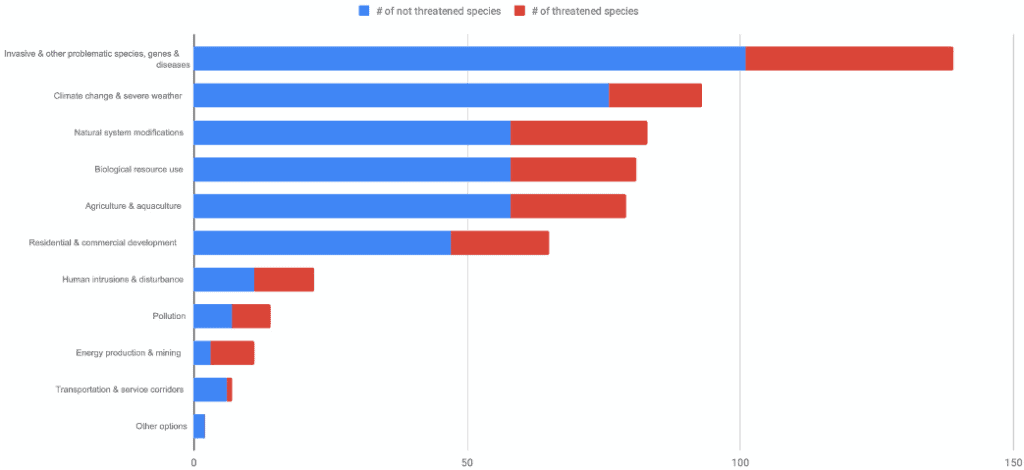Here is John Oliver’s pop take on trees as carbon offsets. (23 minutes.) He basically says that they essentially useless for mitigating climate change because they rarely protect forests from any human threats, and certainly do not provide protection commensurate with the carbon they allow to be released (so they may do more harm than good). Rebuttal?
He also mentions that we could lose trees directly as a result of climate change, independent of any forest management (or lack of). Climate change is the #2 reason for loss of forests according to this research on at-risk tree species:

Here is an overview of the risks and an example of one species.
I’ll essay a minor defense of offsets. Oliver’s case (presented, of course, in an enormously entertaining manner) is that all offsets are fraudulent because they (a) reward behavior that would have occurred without any incentive or (b) reward behavior that does not in fact reduce carbon emissions.
The problem I have with that assertion, as depicted above, is the word “all.” It is true that some offsets might be fraudulent, just as it is true that any product you purchase may not meet the description on the tin. The answer is not to ban all potentially fraudulent products, but rather to supervise them so that they do not veer substantially from their established purpose.
I don’t pretend this is easy, but as our planet descends into some version of flame-scorched hell, tossing the fire extinguishers overboard simply because there is a chance they might not work is idiocy.
Dense stands of water-sucking, heat island-creating ponderosa pine concentrate volatile organic compounds or VOCs that become explosive under hot and dry conditions. The aerosols are like charcoal starter fumes just waiting for a spark.
Ponderosa pine sucks billions of gallons from aquifer recharges, needles absorb heat and accelerate snow melt while aspen leaves reflect sunlight in the summer months and hold snowpacks in winter. Insects like the mountain pine beetle and spruce bud worm can help promote drought- and fire-tolerant species like aspen.
Not that they don’t exist, but when and how did we accept that trees are these amazing carbon vacuums or that improved soil health wouldn’t be an equivalent or better tool?
I never understood how offsets weren’t immediately understood as a cynical ruse to begin with.
But buying out pending timber sales is a “carbon offset” that might actually work.
https://mountainx.com/opinion/forest-service-rejects-mountaintrues-bid-to-save-old-growth-forest/
“With that in mind, on Aug. 11, MountainTrue made an unconventional offer: to pay the Forest Service to leave Brushy Mountain alone. Leave the ancient trees on the summit standing. Let the green salamanders forage through the forest between their breeding rocks without having to contend with logging roads and deadly sun exposure. We were willing to match any price bid on the value of the cut timber in exchange for what would amount to a 100-year carbon lease on those acres.
Ours was the best, most generous offer, yet the Forest Service rejected it without response or any evidence of serious consideration…
There would have been precedent for this kind of transaction. Markets such as the National Carbon Exchange enable emitters to offset their carbon pollution by increasing carbon storage elsewhere. Old-growth forests, whose trees have been standing for centuries, hold tremendous amounts of carbon. Cutting these trees releases that carbon — tons of it — into the atmosphere, where it will worsen the impacts of climate change. Cutting forests, particularly old-growth forests, produces massive amounts of greenhouse gas pollution. Keeping these remarkable tracts of forest standing is a crucial tool for fighting the climate crisis, and that’s something we’re willing to pay for.”
An earlier discussion of “conservation leases” occurred here:
https://forestpolicypub.com/2022/02/04/conservation-groups-should-be-able-to-lease-land-to-protect-it/